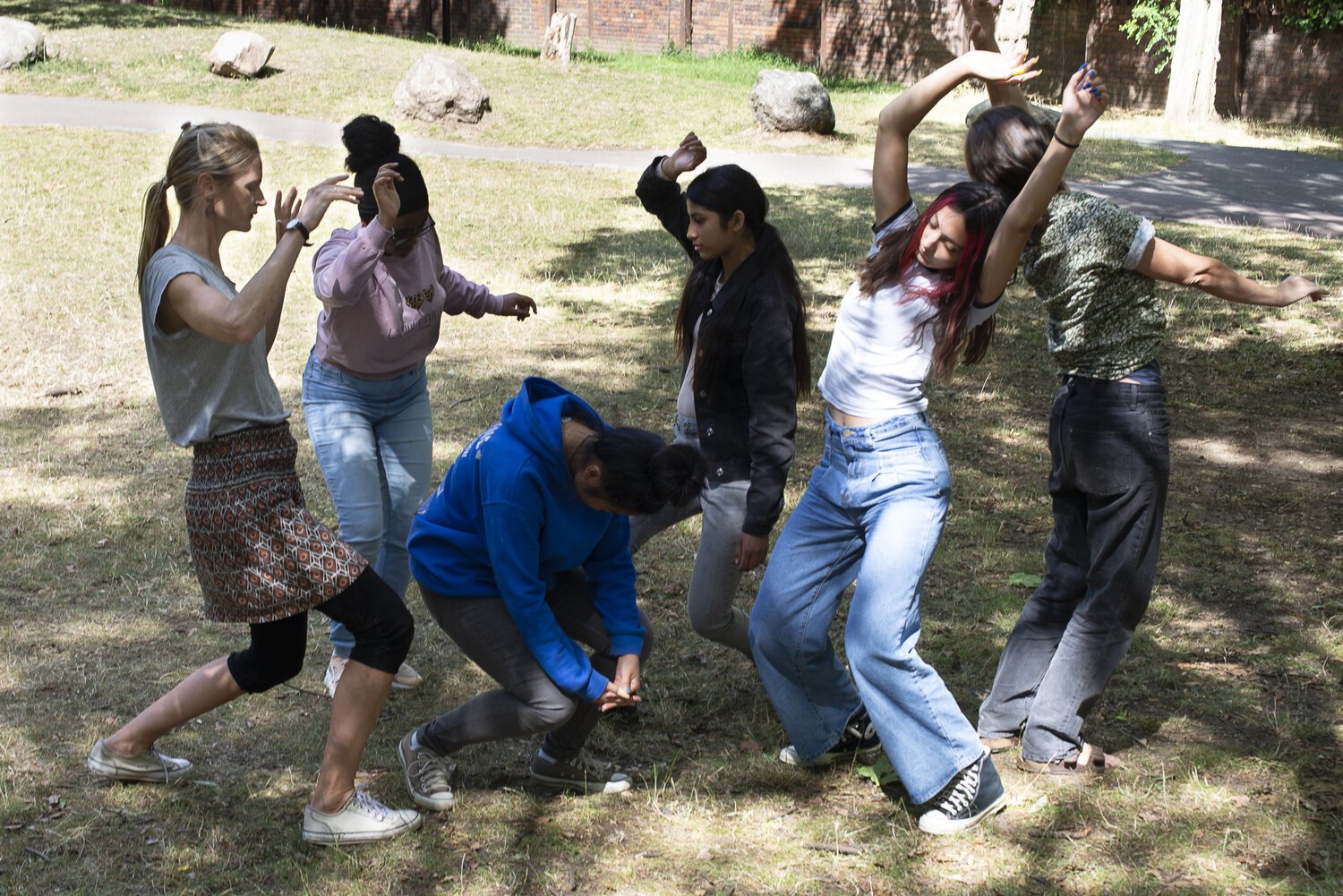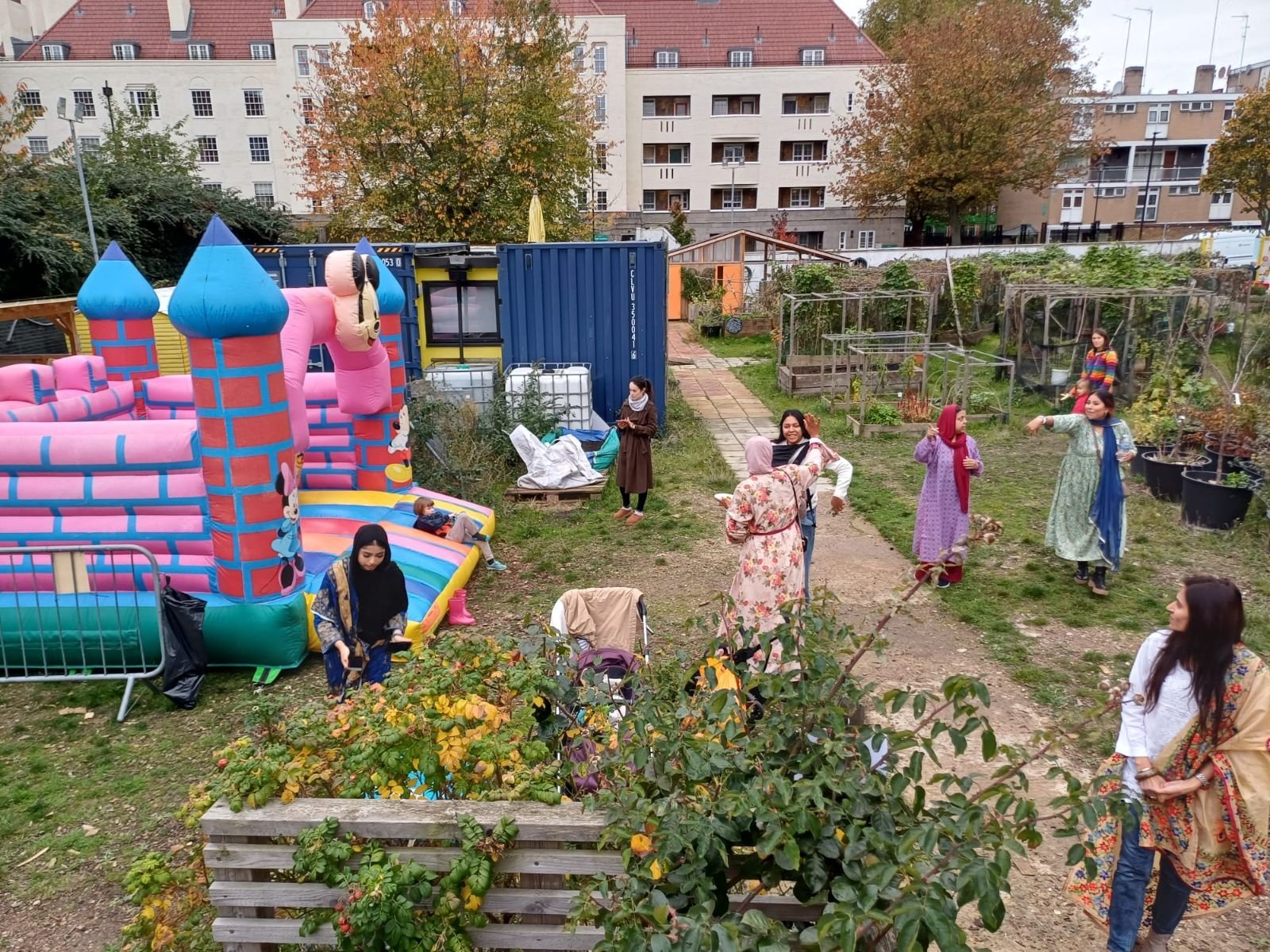Voices of the Earth Summer School
The Voices of the Earth summer school marked a high point in our year-long project funded by The National Lottery Heritage Fund, which is all about the healing power of plants. All in all, 36 participants from a wide variety of backgrounds were involved throughout the week: mothers, children, and young people. This helped us discover and share different experiences, cultural beliefs, and stories, giving everyone the chance to learn not only from nature but also from each other.
The constraints of COVID-19 meant we needed to be creative and flexible about the way we worked together and the spaces we used. Small groups came at different times and we used not only the Story Garden but also the surrounding green spaces of Somers Town, Purchase Park and St Pancras Gardens. Contributions from each group are being woven together into seven audio pieces which will be released in the Autumn.
It was very special to work with Naomi Frederick, an associate of Theatre Complicité, who led physical theatre workshops in the parks, singing circles in the Story Garden Oaks and Roundhouse and injected a positive spirit into each of the twists and turns of this ever changing project. The Complicité way of working illuminated many of the things we hold dear at Global Generation: deep listening, adaptation, co-creation, and celebration. Qualities which the natural world shares in abundance and it was a treat to see these qualities expressed by our young participants throughout the week; each of them bringing their own unique skills and interests into the mix. This is how Cassie and Dontae, two of the Voices of the Earth Fellows describe their experience:
Dontae
The summer school week, for me, was an opportunity to reconnect with green spaces in my local area as I believe I take them for granted as I live so close. Learning about the plants that reside in those green spaces also allowed me to delve deeper into my interest in Norse mythology and do research on what the Rune Casters and sorcerers did to give them their abilities. I found out that the Oak, Ash and Yew trees were very important to them when creating objects with runes on and when creating tonics for spells. It was also amazing fun getting to perform in the park and churchyard, this is because it made me feel a bond with the space that I will never forget.
Cassie
Personally, I found the summer school filled with opportunities which I would not be able to uncover elsewhere. I got to meet different people of all ages and this helped me keep an open mind throughout the project. By having a varied group of people, I was able to learn from different cultures which will benefit me when using different plants and in general in my life.
I adored the routine of learning about plants, their healing properties, origin, and overall beauty before imitating and bringing them to life in my drama performance. We got to bring in our emotions and consider how each plant either moves in grace and harmony or in abrupt, sharp movements. We discovered some plants growing on the side of the road like herb robert and with the minerals in the walls of buildings like fireweed. These are plants which are usually unappreciated and carry the uninformed stigma of weeds. Plants are political and have mixed histories; for example, we learned about white man’s footprint aka Plantago major or broadleaved plantain which got its name from white settlers who dropped seeds where they went, making a trail of their footprints. Another plant I found interesting was faux nettle, a plant which imitates the same likeness of an actual nettle without its poison as a defence mechanism against predators. I found it amazing how nature will always find a way to grow even when humans try to build on top of it, it ultimately shows its dominance, power and importance.
When learning Norse, Greek and Celtic Myths, it added an element of entertainment and history to stories which gave plants like yarrow, daisy, ash and oak character. When we did the drama work, we had to imitate certain objects; for example, an aspirin in water – how it reacted and fizzed, a crumpled up plastic bag and how it would slowly open up due to its compressed state. I would pay close attention to its motion and figure out how I could use my hands and facial expression in my piece. It allowed me to stay connected to my body. Moreover, the group exercises we did help me gain more confidence and if I were to forget a specific part, everyone would work as a group in order to make the performance work.
Photos courtesy of Sarah Ainslee and Theatre Complicité








Meet our second cohort of earth build trainees! Their focus has been on all things wood, including green woodworking and the timber construction of the kitchen. They have learned on the job, while working on our sustainable natural build construction project to create our first permanent community garden, at the #TriangleSite.